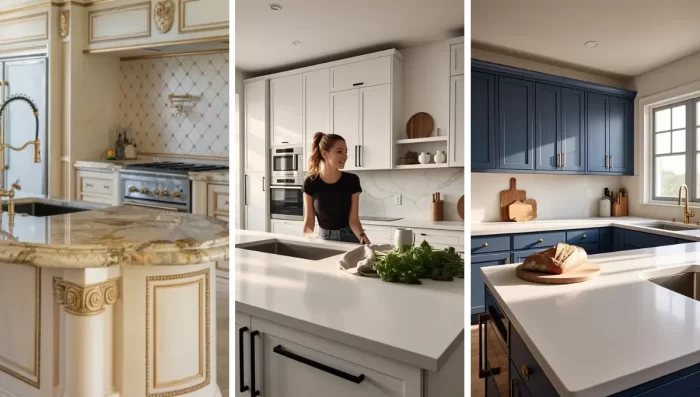Choosing the right countertop for your kitchen or bathroom is essential, but selecting the appropriate edge style is just as important.
The countertop edge not only influences the look of your space but also affects functionality and durability.
With numerous options available, it’s important to know the pros and cons of each and understand which style suits your needs best.
In this article, we will explain 10 popular types of countertop edges, weigh their pros and cons, and provide expert tips to help you make the right choice. Let’s dive in!
Related: The Ultimate Guide to Countertop Materials
List of 10 different types of countertop edges
1. Straight Edge

A straight edge, also known as a squared edge, is one of the most common countertop edge styles. It features clean, sharp lines that give your countertop a minimalist, modern look.
✅ Pros: Clean, modern, easy to clean.
❌ Cons: Sharp corners can be hazardous.
💡 Best for: Contemporary kitchens, budget-friendly projects.
Is a straight edge boring?
Not at all! It’s timeless and works well with sleek cabinetry.
Pro Tip: The straight edge is a safe bet if you’re looking for a versatile and affordable option, especially in contemporary kitchens. To reduce the risk of injury, you can opt for slightly rounded corners while maintaining the overall straight design.
Also Read: What Color Countertops Go With Brown Cabinets?
2. Beveled Edge
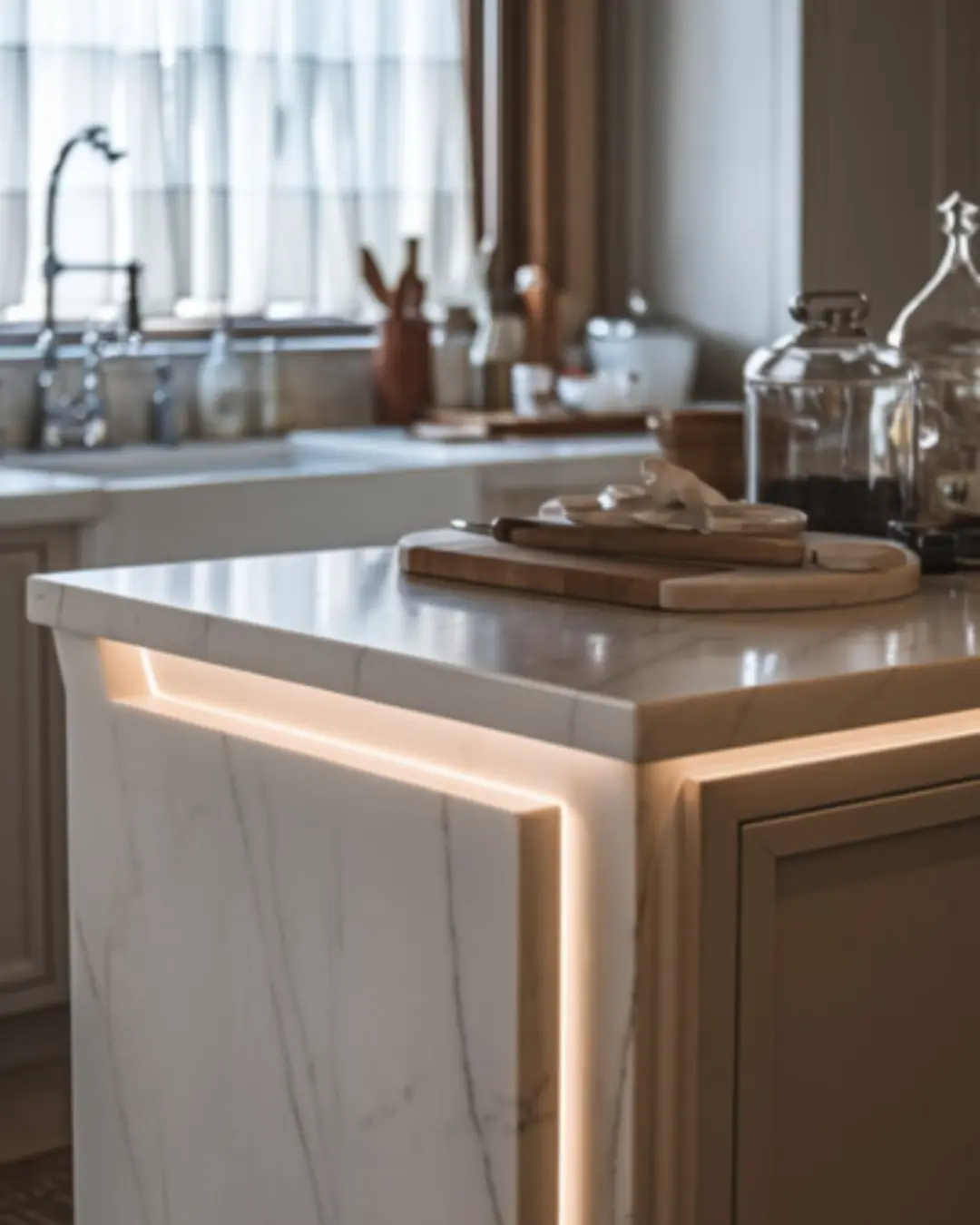
A beveled edge features a 45-degree angle cut along the edges, creating a sleek, angled appearance. It’s a popular choice for both traditional and contemporary kitchen designs.
✅ Pros:
- Adds dimension and a polished look
- Suitable for various kitchen styles
- Easier to clean than highly decorative edges
❌ Cons:
- Slightly more expensive than straight edges
- The angle may be more prone to chipping over time
Pro Tip: Beveled edges are perfect if you want a modern, polished appearance with a bit of flair. Choose a subtle bevel for a sleek look or a deeper bevel for more visual impact.
Also Read: Kitchen Cabinet Colors for White Tile Floors
3. Eased Edge

An eased edge is a variation of the straight edge with slightly rounded corners. This creates a softer look while maintaining clean lines, making it a popular choice for modern kitchens.
✅ Pros:
- Safer than straight edges due to rounded corners
- Works well with modern or contemporary designs
- Easy to clean and maintain
❌ Cons:
- Less decorative than other options
- Rounded edges may wear down over time
Pro Tip: The eased edge strikes a balance between style and safety, making it ideal for family-friendly kitchens. If you’re worried about sharp corners but still want a modern look, this is a great option.
Also Read: Kitchen Cabinet Colors to Complement Terracotta Floor
4. Bullnose Edge
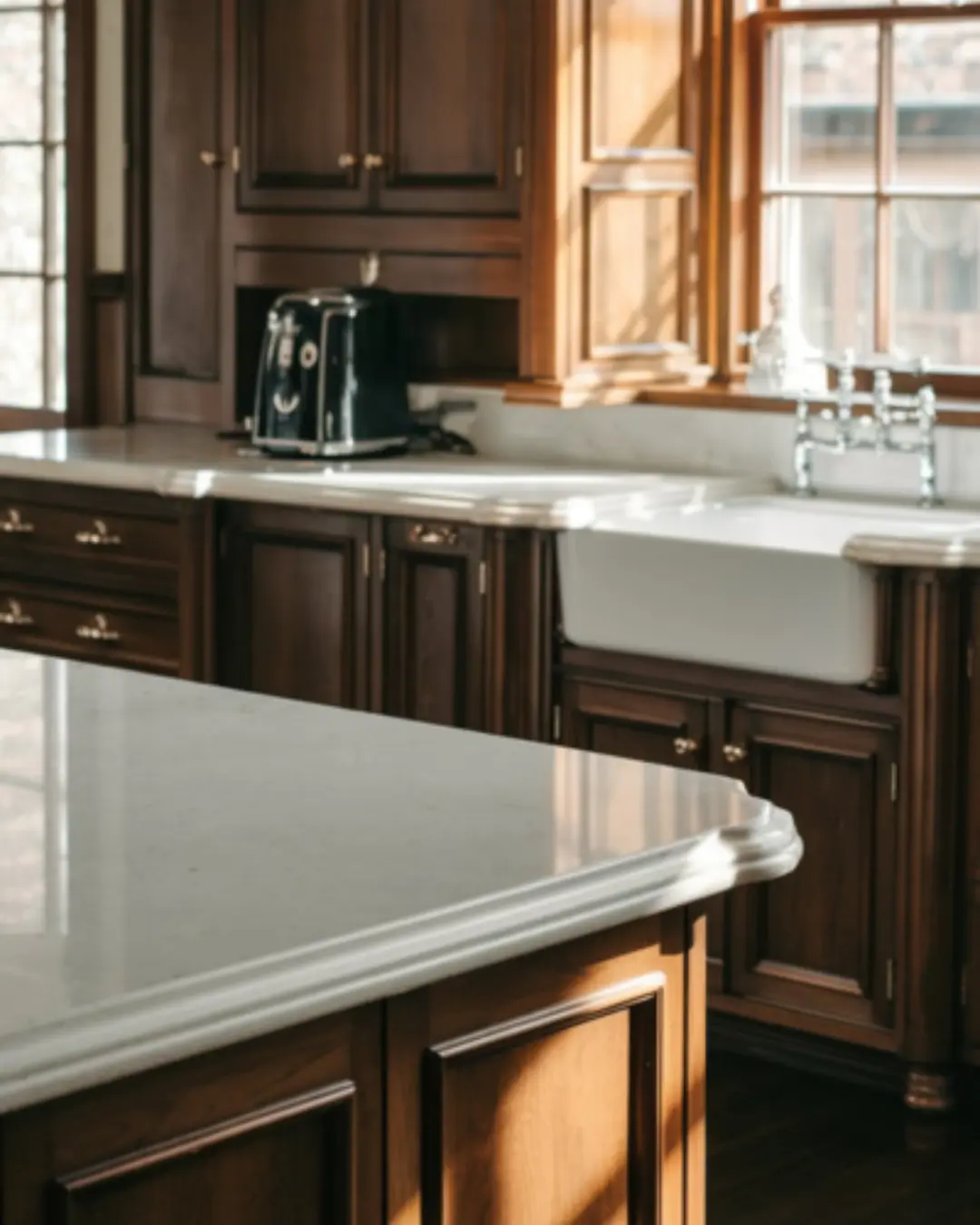
The bullnose edge is fully rounded, creating a soft, smooth appearance. It’s a classic choice that complements various design styles, from traditional to contemporary.
✅ Pros:
- Safe for homes with children due to rounded edges
- Timeless and versatile design
- Easy to clean
❌ Cons:
- Water may drip off more easily, especially near sinks
- Can make countertops appear thinner than they are
Pro Tip: For a softer, timeless look, choose the bullnose edge. It’s especially great for families or households where safety is a concern.
Also Read: Types of Cabinet Doors and Styles
5. Half-Bullnose Edge
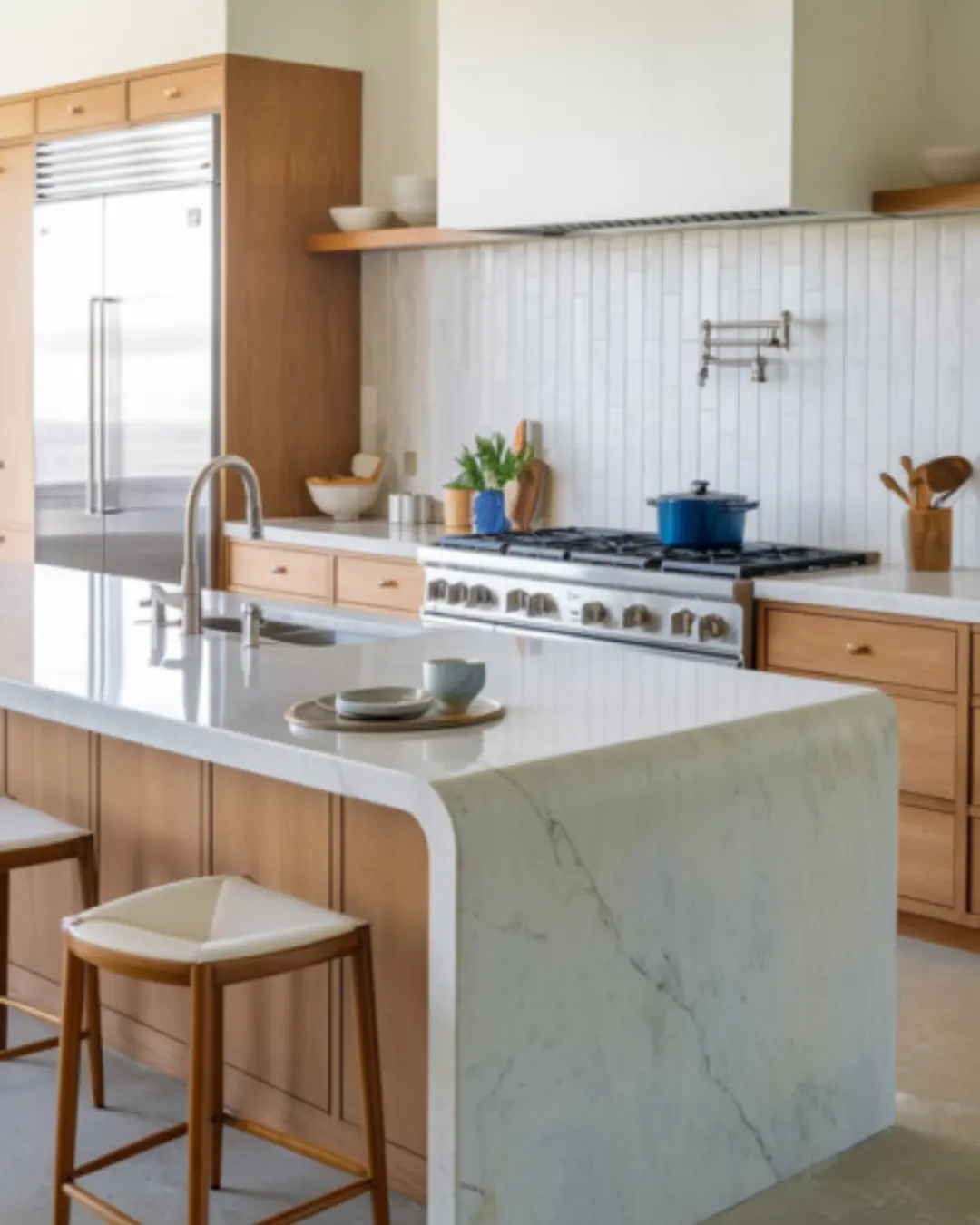
A half-bullnose edge combines the rounded curve of a bullnose with a flat underside, offering a slightly modern twist on the classic look.
✅ Pros:
- Offers the softness of a bullnose with a modern touch
- Helps prevent water from dripping off the edge
- Versatile and works with various design styles
❌ Cons:
- Less dramatic than a full bullnose
- Can be more expensive than simpler edges
Pro Tip: If you love the bullnose look but want a bit more structure, the half-bullnose edge gives you the best of both worlds. It’s a great option for both kitchens and bathrooms.
6. Ogee Edge
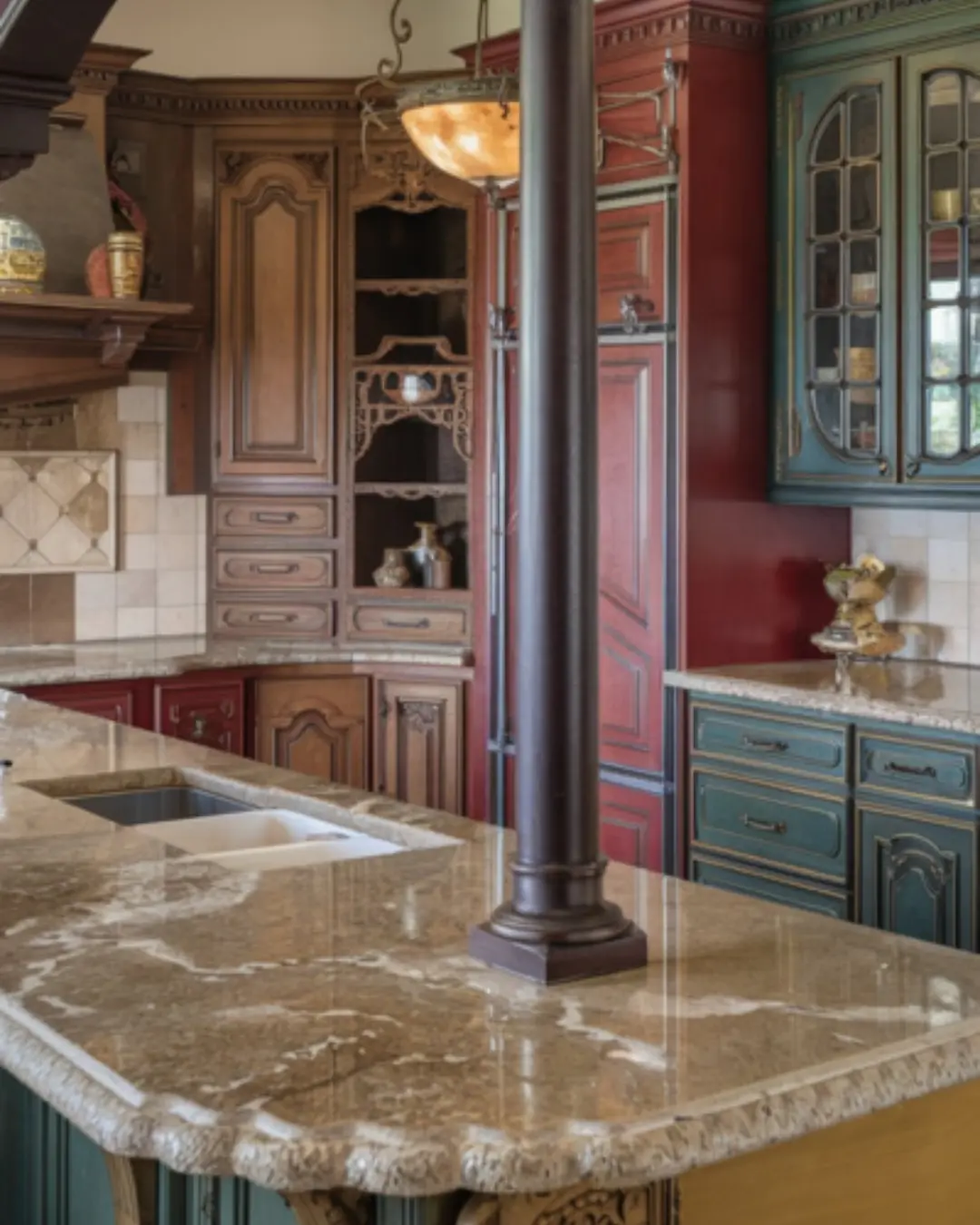
https://housemakingideas.com/ogee-edge-countertop/An ogee edge features an elegant, S-shaped curve that adds sophistication and grandeur to your countertop. It’s commonly found in traditional and luxurious kitchen designs.
✅ Pros:
- Adds elegance and visual interest
- Perfect for traditional and classic kitchen styles
- Creates a high-end, custom look
❌ Cons:
- Difficult to clean due to intricate design
- One of the more expensive edge styles
- More prone to chipping due to the delicate shape
Pro Tip: If you’re designing a traditional kitchen or looking for a luxurious finish, the ogee edge is a beautiful choice. Keep in mind the maintenance required for its intricate design.
7. Double Ogee Edge
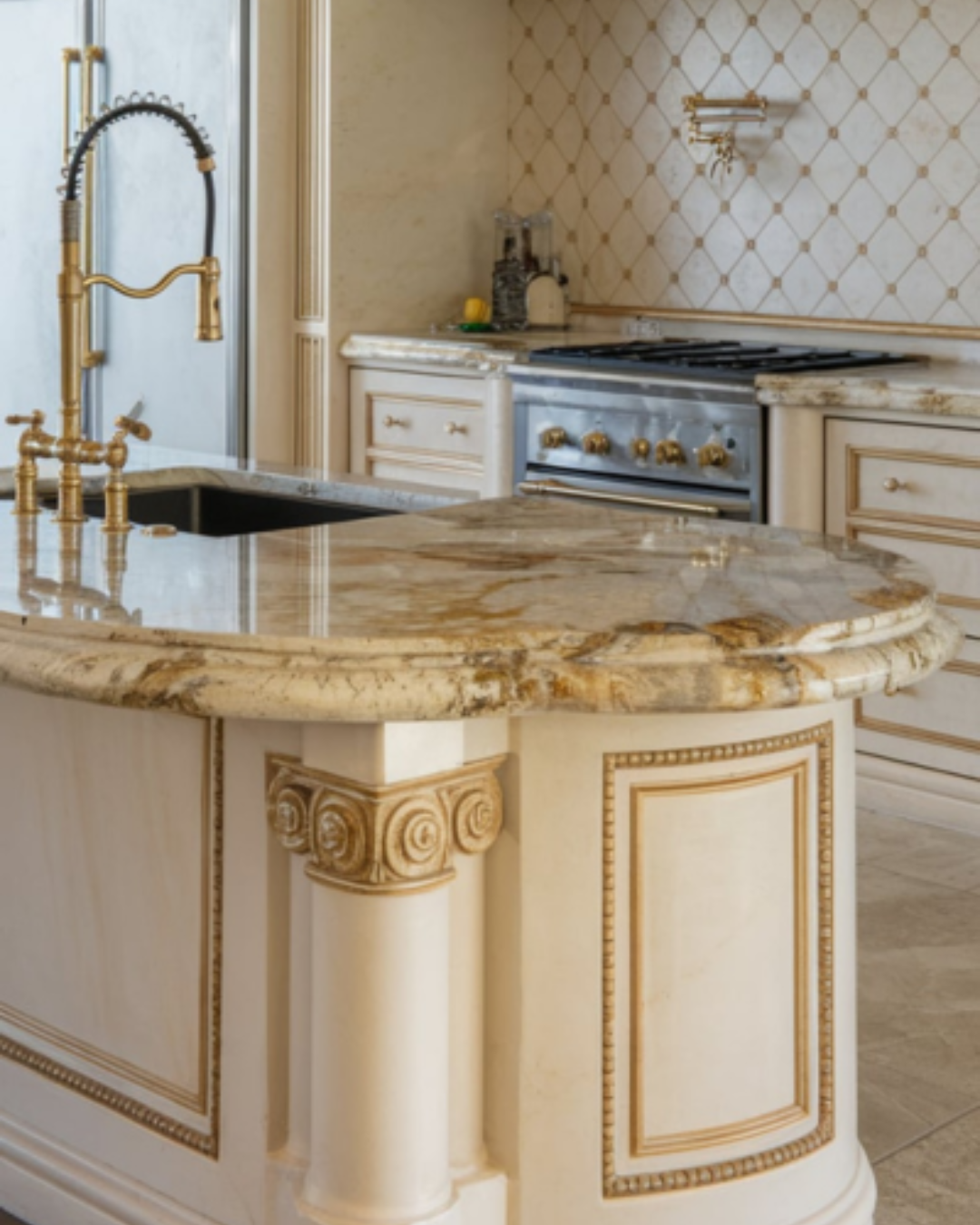
A double ogee edge is a more dramatic version of the traditional ogee edge. It features two stacked curves for an even more elaborate, decorative appearance.
✅ Pros:
- Adds a high level of luxury and sophistication
- Ideal for high-end, traditional kitchens
- Makes a bold visual statement
❌ Cons:
- Very difficult to clean
- Expensive and requires expert craftsmanship
- Not ideal for minimalist or modern designs
Pro Tip: The double ogee edge is perfect for luxury kitchens or those looking to make a bold design statement. However, it’s best suited for low-traffic areas due to its high-maintenance nature.
8. Waterfall Edge
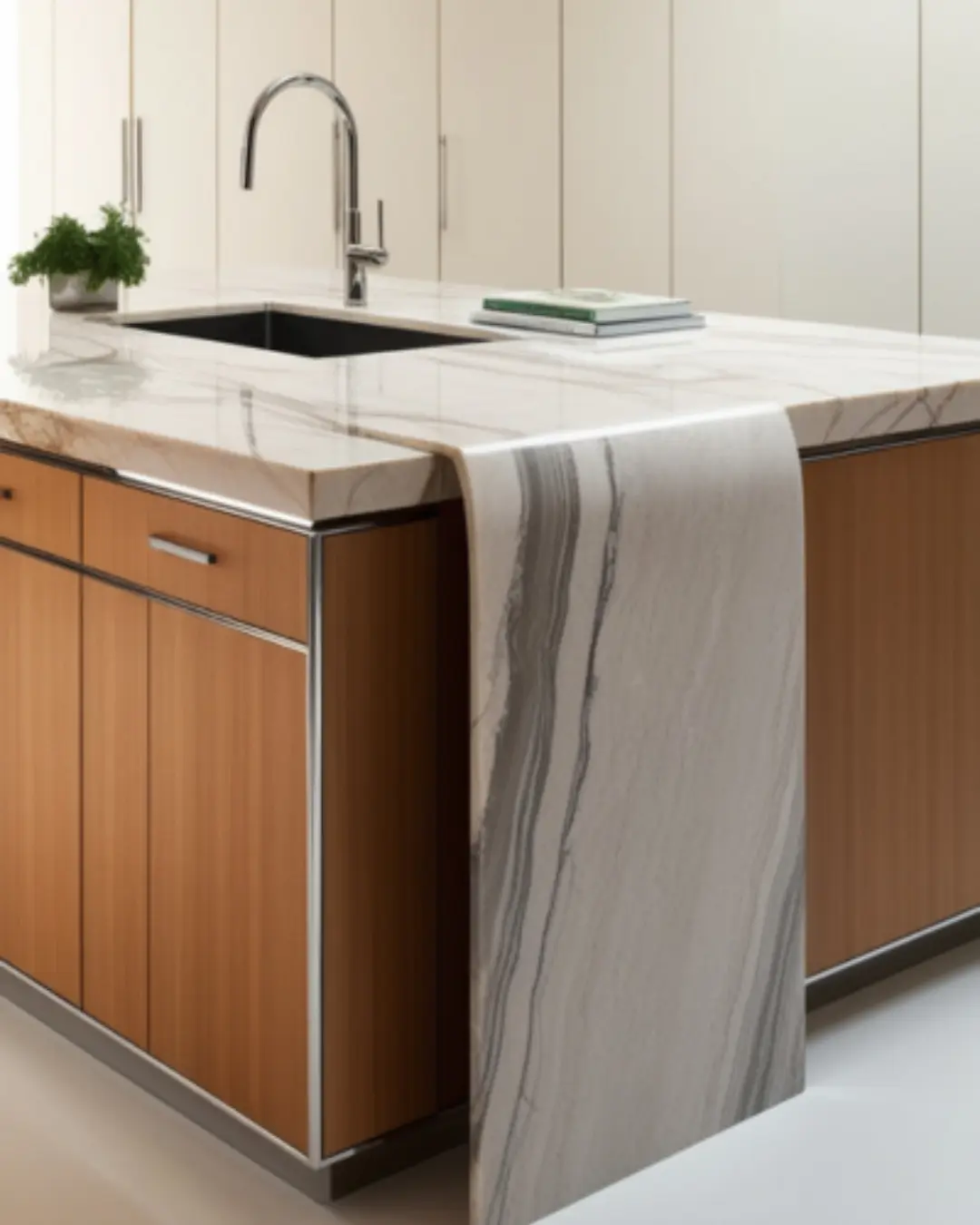
A waterfall edge extends the countertop material down the sides of the cabinets, creating a continuous flow from the surface to the floor. This edge style is often seen in modern and contemporary kitchens.
✅ Pros:
- Creates a sleek, seamless look
- Makes countertops appear larger and more luxurious
- Adds a modern, dramatic flair
❌ Cons:
- Expensive due to the extra material required
- Requires more space, making it less ideal for small kitchens
Pro Tip: If you’re aiming for a bold, modern kitchen design, the waterfall edge is a stunning choice. It’s ideal for those who want their countertop to be the focal point of the room.
9. Mitered Edge
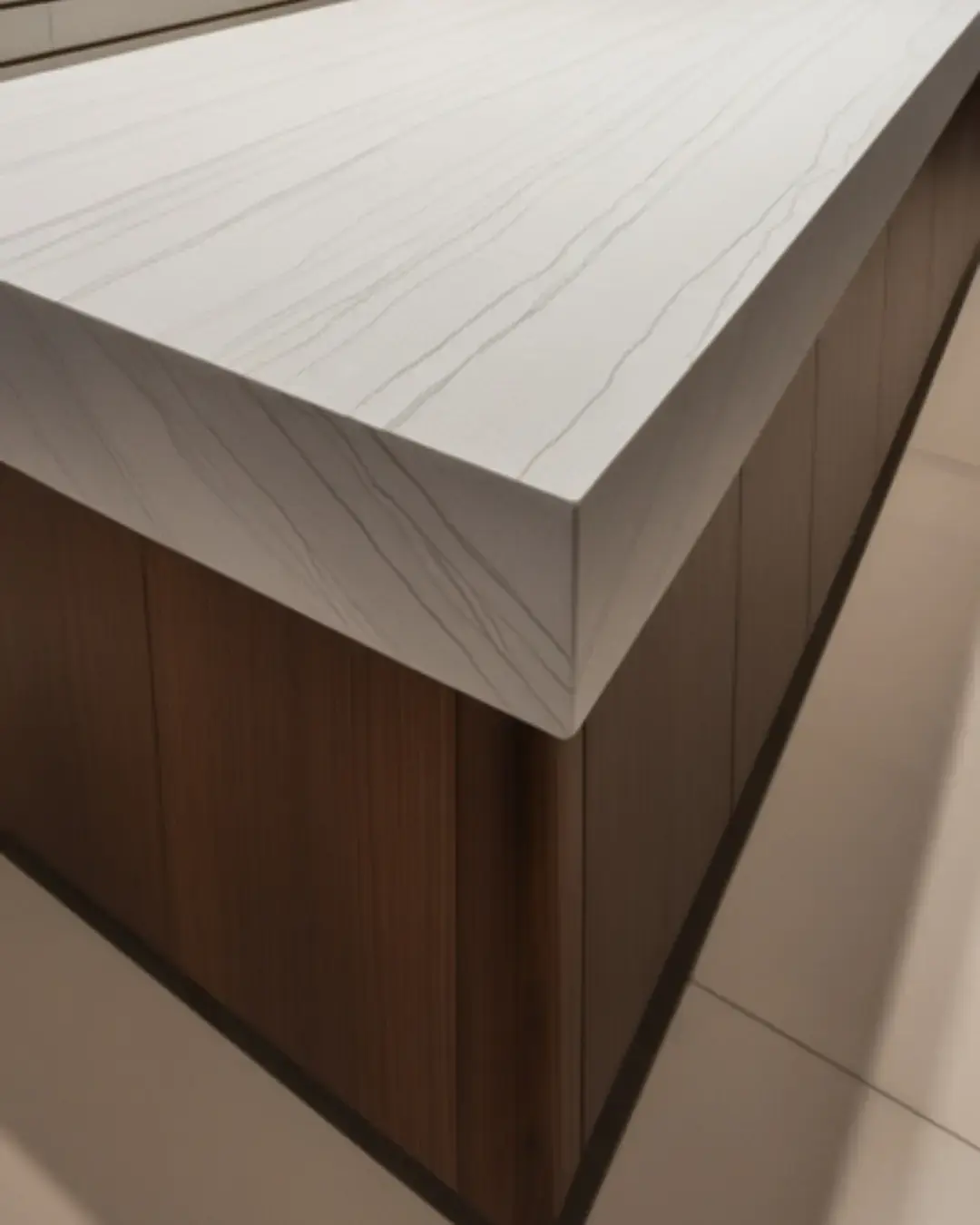
A mitered edge creates a thick, seamless appearance by joining two pieces of stone at a 45-degree angle. It’s often used to give countertops a thicker, more substantial look without the need for additional material.
✅ Pros:
- Gives countertops a thick, luxurious appearance
- Seamless and modern
- Works well with large kitchen islands
❌ Cons:
- Expensive due to the precision required
- Visible seams may appear over time if not installed properly
Pro Tip: The mitered edge is perfect for creating a bold, thick countertop look without using extra material. It’s ideal for kitchen islands where you want to make a statement.
10. Dupont Edge
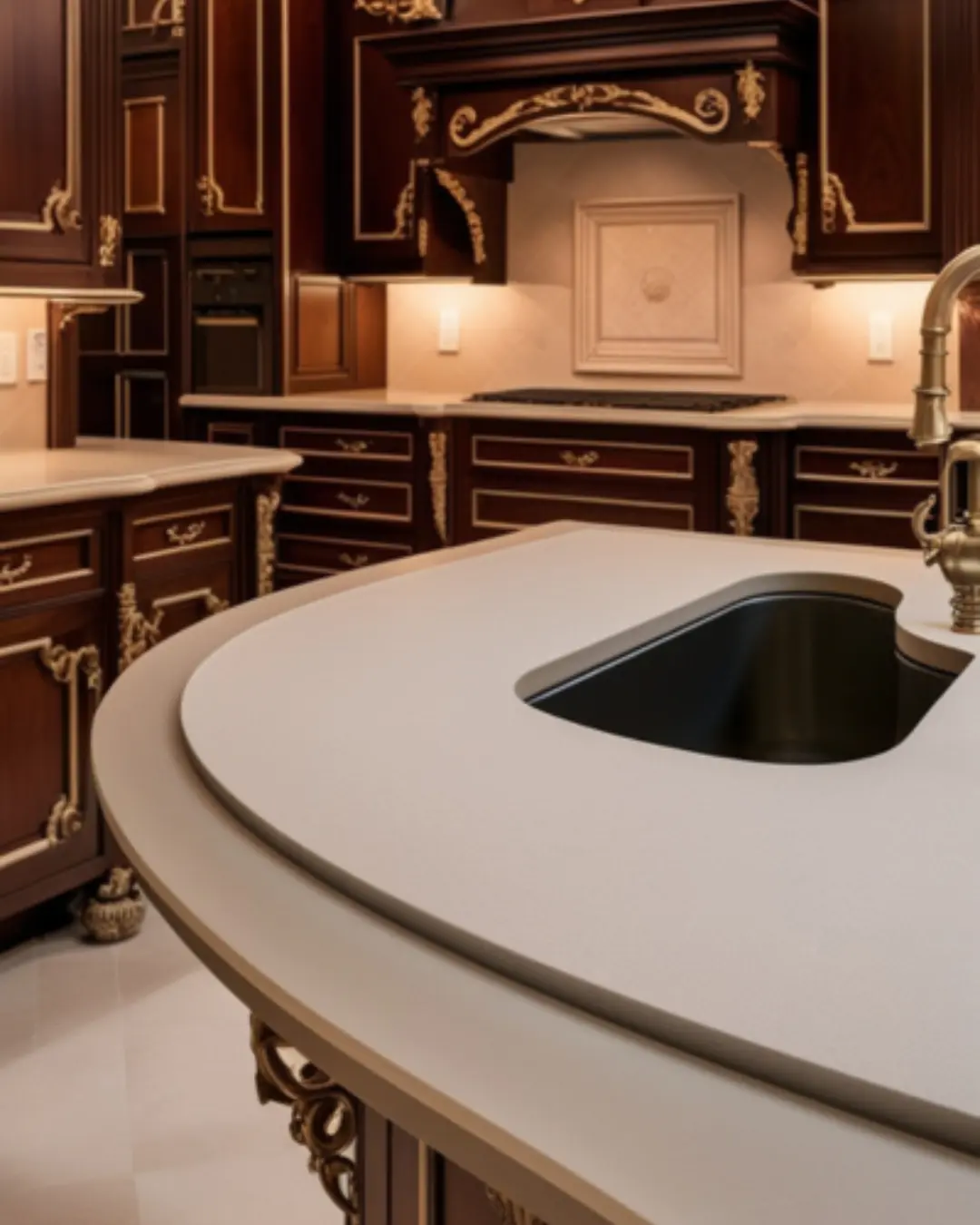
The Dupont edge, also known as a cove or crescent edge, features a short, straight edge at the top that curves into a rounded edge below. This creates an elegant, detailed look.
✅ Pros:
- Adds a touch of sophistication to countertops
- Works well in traditional or elegant kitchen designs
- Adds depth and character
❌ Cons:
- Difficult to clean due to the intricate curves
- More expensive than simpler edges
Pro Tip: The Dupont edge is great if you want a luxurious, detailed countertop that stands out. It pairs well with traditional kitchen designs, but requires a bit more upkeep.
Which Edge is Best for You?
When choosing the best countertop edge, consider the overall style of your kitchen, your lifestyle, and your budget. Here’s a quick rundown of which edge might be best for you:
- Minimalist or Modern Kitchens: Straight edge, eased edge, or waterfall edge.
- Traditional or Luxurious Kitchens: Ogee edge, double ogee edge, or Dupont edge.
- Family-Friendly Kitchens: Bullnose edge or half-bullnose edge.
- Budget-Friendly Kitchens: Straight edge or eased edge.
Pro Tips for Choosing Countertop Edges:
- Consider Maintenance: Ornate edges like ogee and Dupont require more cleaning, while simpler edges like straight or eased are easier to maintain.
- Safety First: If you have children or seniors at home, opt for rounded edges like bullnose or eased to prevent injuries.
- Budget Wisely: Some edge styles, like mitered or waterfall, require more material and labor, so be sure to factor this into your budget.
- Complement Your Style: Always choose an edge style that complements your overall kitchen design, whether it’s modern, traditional, or transitional.
Conclusion
Countertop edges may seem like a minor detail, but they can greatly impact the overall look and functionality of your kitchen or bathroom. Whether you prefer the clean lines of a straight edge or the elegance of an ogee edge, each style has its pros and cons. Consider your design preferences, safety concerns, and budget to choose the best countertop edge for your home.
Also, don’t forget to update your home with house making ideas. Let us make your home look beautiful.
